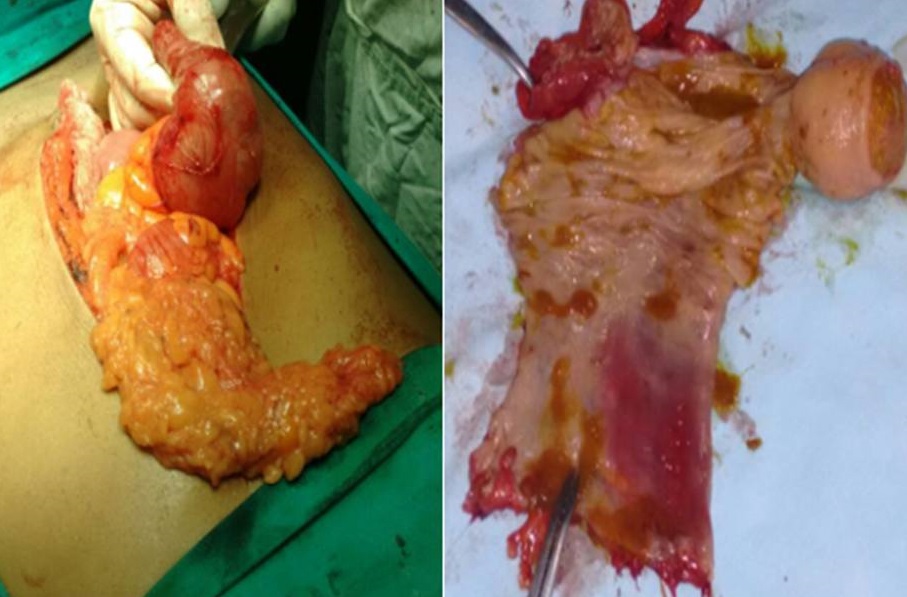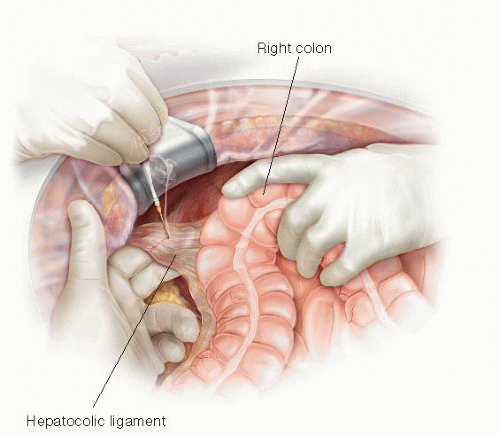
Medial approach for safe resection of the Gerota’s fasciaįor obtaining a sufficient surgical margin, we dissected the Gerota’s fascia and exposed the surface of the left kidney just behind the tumor. Following this, the lateral attachment was dissected, and the descending colon was laterally mobilized to the splenic flexure. The LCA was clipped and divided at the origin. After preserving the retroperitoneal tissue, including the hypogastric nerve plexus, ureter, and gonadal vessels, we exposed the root of the IMA clearly and dissected the swollen nodes along the IMA. The sigmoid colon was mobilized in a caudal-to-cranial direction. Mobilization of the left-sided colon and dissection of the regional nodes

The gauze was placed on this layer, which was a “Goal” for the medial approach. The superior lobe and the fat of the transverse mesocolon were dissected in the proximity of the pancreas, and the posterior lobe of the transverse mesocolon was exposed cranially (Fig. No peritoneal metastasis was observed:Ĭranial approach to set a “Goal” for the medial approachįirst, the omental bursa was opened widely, and the adhesion between the transverse mesocolon and gastric posterior wall was dissected to visualize the pancreatic outline. A fist-size tumor covered with the omentum was detected at the anal side of the splenic flexure. The following ports were placed: a 12-mm port at the umbilicus for a scope and 5-mm ports at each quadrant. The patient was placed in the lithotomy position under general and epidural anesthesia. Herein, we report the first case of cranial-first approach of laparoscopic left colectomy for T4 descending colon cancer invading the Gerota’s fascia. The cranial-first approach would make it easier to detect the optimal layer in the medial approach, avoiding pancreatic injury and achieving CME. However, using the medial approach, it is difficult to return from this layer to the superior layer of the mesocolon because the thick Gerota’s fascia envelops the pancreas. The plane between the Gerota’s fascia and left kidney, which leads to the posterior layer of the pancreas, is relatively easy to detect. This approach involves dissection of the superior layer of the mesocolon and transverse mesocolon at the posterior border of the pancreas cranially this makes it possible to clearly visualize the pancreas and origin of the transverse mesocolon, leading to safe splenic flexure mobilization and CME, which is the strongest advantage of this approach.įor T4 descending colon cancer invading the Gerota’s fascia, dissection of the Gerota’s fascia is needed to obtain a sufficient surgical margin. However, the thick mesocolon often prevents surgeons from detecting the pancreas, resulting in pancreatic injury or incomplete CME.įor left-sided colon cancer, the cranial-first approach is one of the promising procedures for obtaining better surgical outcomes it has been reported previously. For complete mesocolic excision (CME), dissection of the transverse mesocolon is necessary in the proximity of the pancreas. Laparoscopic colectomy for left-sided colon cancer is technically demanding owing to the complicated anatomy around the pancreas and transverse mesocolon. The cranial-first approach of laparoscopic left colectomy appears to be safe and feasible and could be a promising method for selected patients with T4 descending colon cancer invading the Gerota’s fascia. Pathological findings revealed the invasion into the Gerota’s fascia, and the resection margin was negative for cancer. She was discharged after surgery without postoperative complications. The total operative time was 233 min, and the estimated blood loss was 98 ml. We performed laparoscopic left colectomy using the cranial-first approach to set a “Goal” at the inferior border of the pancreas for safe resection of the Gerota’s fascia.

Case presentationĪ 75-year-old woman was diagnosed with T4 descending colon cancer invading the Gerota’s fascia.

For descending colon cancer, the cranial-first approach makes it possible to clearly visualize the pancreas and origin of the transverse mesocolon, leading to safe splenic flexure mobilization and complete mesocolic excision, which is the strongest advantage of this approach. We believe that setting a “Goal” that will guide the surgeons in returning from the deep layer could be the key to safe en bloc resection of neighboring organs. The safety and feasibility of laparoscopic colectomy for T4 colorectal cancer remain controversial.


 0 kommentar(er)
0 kommentar(er)
